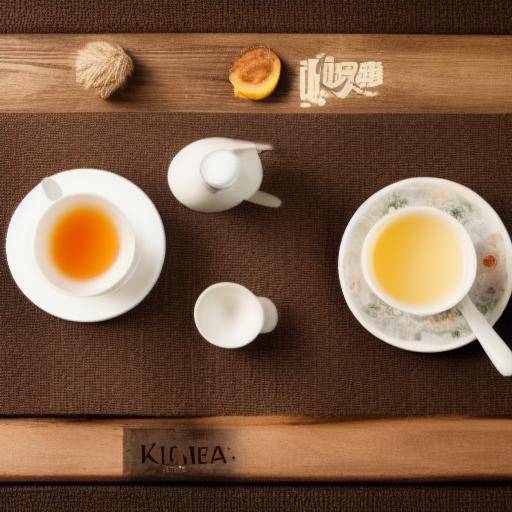
Introduction
The tea ceremonies in Kyoto, Japan, offer a unique experience that immerses participants in the rich Japanese tradition. From the ceremonial matcha ritual to the beauty of silk kimonos and the serenity of the centuries-old Zen gardens, each aspect represents a vivid expression of Japan's history, culture and spirituality. In this article, we will explore these ceremonies in detail, immerse ourselves in their history, meaning, practical application, and future. Prepare your cup of tea and get carried away by the fascinating world of Japanese tradition.
History and Origins
The tea ceremonies in Kyoto have their roots in the rich history of feudal Japan, where tea was considered a sacred drink with deep ties to Zen spirituality and philosophy. It was during the 16th century that the legendary tea teacher Sen no Rikyū perfected the tea ceremony, laying the foundations of what we know today as the ceremonial matcha.
The Ceremonial Match: A Dance of Tradition and Elegance
The matcha is a special form of green tea powder, known for its unique properties and its connection to Zen meditation. Each gesture, every movement in the preparation and consumption of the matcha has a symbolic meaning that transcends the purely aesthetic. The participants are immersed in a meticulous dance of tradition and elegance, where each step is an expression of harmony and respect for the present and others.
The Kimonos de Seda: Elegance and Centenary Beauty
The kimono occupies a central place in Japanese aesthetics and is an emblematic garment of Japanese tradition and elegance. The silk kimonos, with their exquisite designs and symbolic colors, are an integral part of tea ceremonies, enriching the experience with its beauty and ancient cultural meaning. Each fold of the kimono and every detail of its outfit reflect a deep connection with the past and nature.
The Centenary Zen Gardens: Spaces of Contemplation and Calm
The influence of Zen in tea ceremonies becomes evident in the magical Zen gardens of Kyoto. These gardens, designed with minimalist aesthetics and a deep connection with nature, invite contemplation and calm. Its carefully placed stones, the serenity of its ponds and the harmony of its natural elements serve as a perfect environment to enjoy the matcha and immerse yourself in the very essence of life.
Benefits and Challenges of Tea Ceremony in Kyoto
The tea ceremonies in Kyoto offer a variety of benefits, but also present unique challenges. On the one hand, they provide a space for spiritual connection, relaxation and contemplation. On the other hand, the preservation of the authenticity and purity of these ceremonies in a modern world presents continuous challenges. However, its cultural and spiritual significance endures, attracting people from all over the world to its timeless beauty.
How to Participate in a Tea Ceremony in Kyoto?
Participation in a tea ceremony in Kyoto is an enriching and unforgettable experience. It is not only about consuming a drink, but being part of a millennial tradition that connects the past with the present. By diving into the ceremonial matcha, the silk kimonos and the Zen centenarian gardens, the participants have the opportunity to first experience the essence of Japanese culture.
Conclusions and future
The tea ceremonies in Kyoto offer a beautiful look at Japanese tradition and spirituality. From the ceremonial matcha, with its deep connection to Zen philosophy, to the elegance of silk kimonos and the serenity of Zen gardens, each aspect represents a vivid expression of Japan's history, culture and spirituality.
Future Trends and Predictions
The future of tea ceremonies in Kyoto is bright, as they continue to attract international attention and fuel a renewed interest in Japanese tradition. The combination of ancient wisdom with modernity offers unlimited possibilities to expand the beauty and relevance of these ceremonies beyond the borders of Japan. With a renewed focus on sustainability, authenticity and harmony, tea ceremonies in Kyoto are prepared to continue captivating and enriching the lives of people in the coming decades.
Conclusions
The tea ceremonies in Kyoto are much more than simple events; they represent a deep connection with the Japanese spirit, its rich history and its constant quest for harmony and beauty. From the ceremonial matcha that symbolizes respect and calm, to the silk kimonos that reflect the timeless elegance, and the centennial Zen gardens that invite contemplation, these ceremonies offer a temporary escape to a world of beauty and transcendental significance. Dive into the Japanese tradition through these ceremonies, and you will discover a universe of wonders that will last in your heart long after the last drop of tea has been consumed.
Frequently asked questions
1. What is the meaning of the ceremonial matcha?
The ceremonial matcha is not only a drink, but a philosophy in the form of tea. It represents calm, respect and spiritual connection, and is carefully prepared following a ritual sequence that symbolizes harmony.
2. How did one dress to participate in a tea ceremony in Kyoto?
To attend a tea ceremony in Kyoto, it is recommended to wear a traditional kimono and wear tai socks, zori shoes and an obi (swimming).
3. What are the benefits of participating in a tea ceremony?
Participating in a tea ceremony in Kyoto can bring benefits such as relaxation, spiritual connection, appreciation of traditional beauty and a greater understanding of Japanese culture.
4. Where can tea ceremonies be found in Kyoto?
Tea ceremonies are held in several places in Kyoto, such as temples, specialized schools and hotels. Some establishments offer experiences designed for interested tourists.
5. What is the symbolism behind silk kimonos at tea ceremonies?
Silk kimonos are not only clothing; they represent Japanese elegance, history and cultural depth. In tea ceremonies, they convey respect and appreciation for tradition and aesthetics.
6. What role do Zen gardens play in tea ceremonies in Kyoto?
Zen gardens offer a serene and harmonious environment to enjoy the ceremonial matcha. Its minimalist design and its connection to nature invite contemplation and calm.
